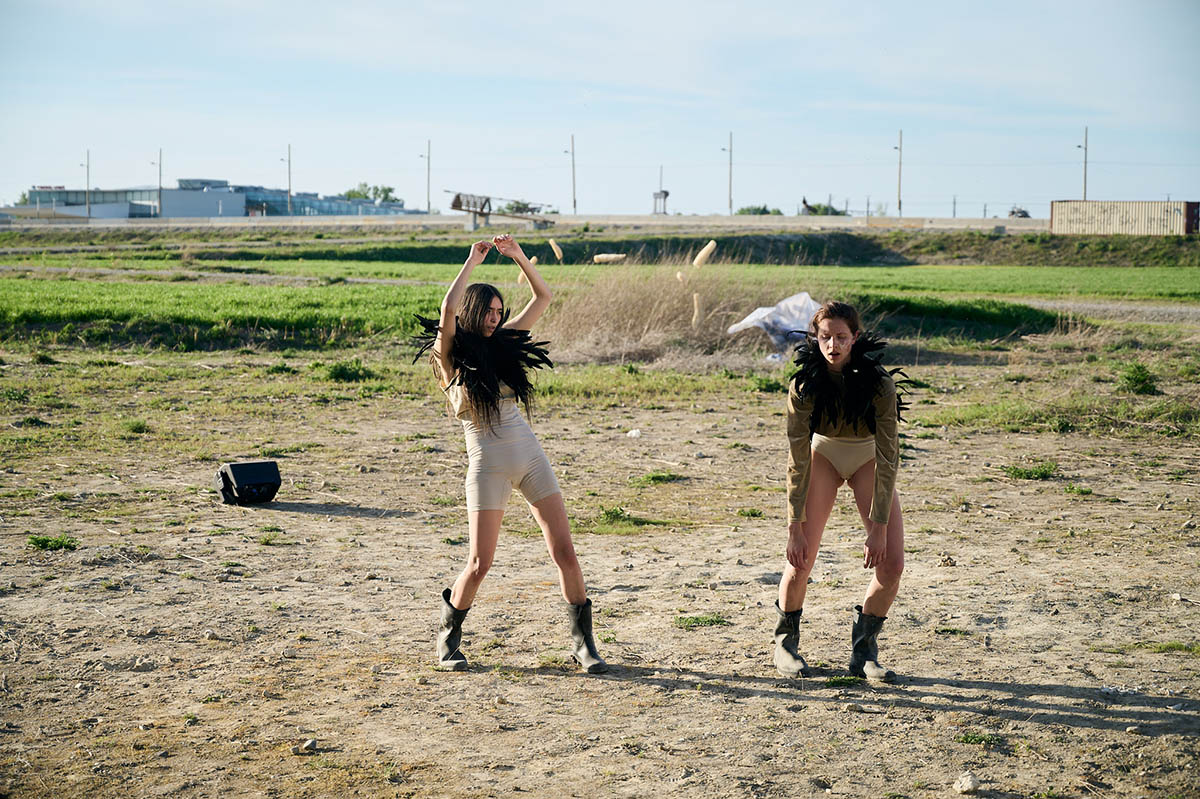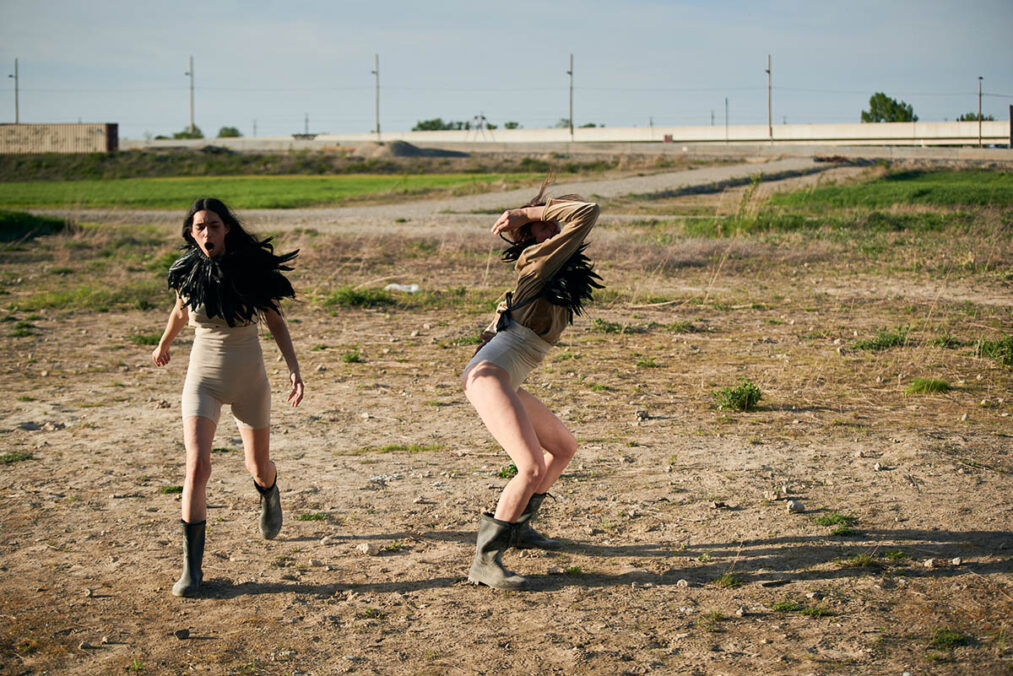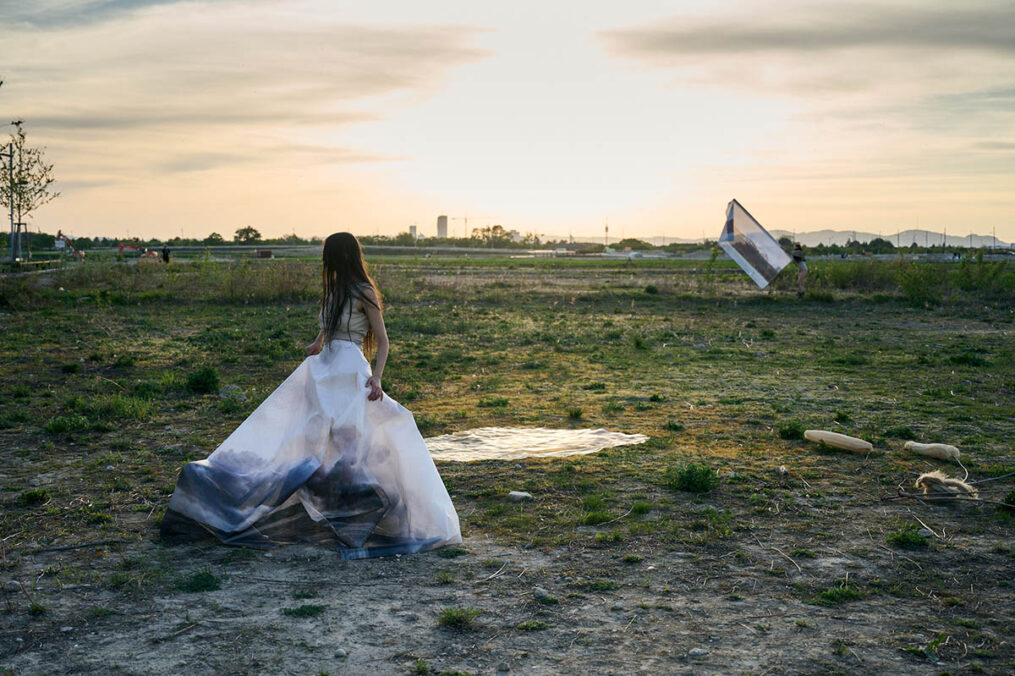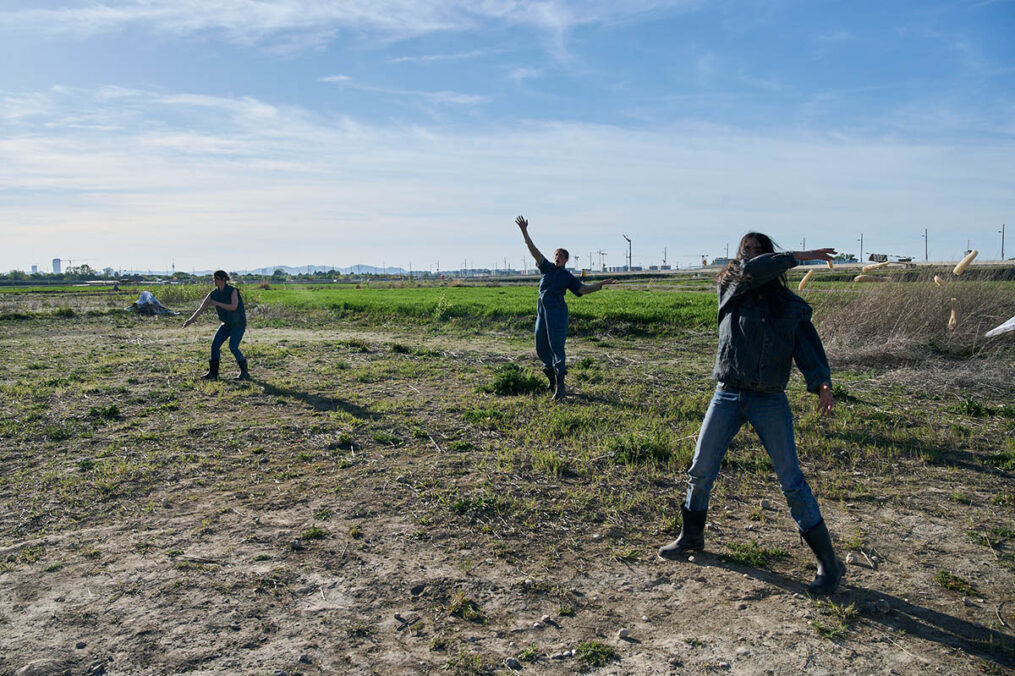
Theater in der Landschaft. Vielleicht hat man dazu schon so einige Bilder im Kopf. Bühnen über dem Wasser oder in einem Steinbruch, zum Beispiel. Wenn Claudia Bosse allerdings von Theater in der Landschaft spricht, dann heißt das Schritte auf unebenem Boden ohne Bühne, Körper in Bewegung, Suchbewegung. Von Performer*innen, Zuseher*innen, nichtmenschlichen Akteur*innen.
Ein Theater nicht nur in, sondern mit der Landschaft. Berührt, beeinflusst, und in Austausch mit lokalen Erzählungen, Licht, und Flora. Mit haunted landscape/s wendet sich Claudia Bosse nun besonders verwundeten Landschaften zu, deren Geschichten, Erfahrungen, und Bedingungen und den Geistern, die sie heimsuchen.

Austragungsort von haunted landscape/s ist ab 8. Mai 2024 die Seestadt Aspern. Genauer gesagt, das Brachland vor und in den Seestadt Studios. Dort, wo einst Napoleon kämpfte, wo sich später ein Flugfeld befand und wo seit den 2010er Jahren eines der größten Stadtentwicklungsprojekte Europas enstanden ist, findet sich nun inmitten von Kränen und der geplanten Utopie der Stadt die Gruppe von knapp 30 Performer*innen zusammen. Und macht den Ort zum Schauplatz für die Suche nach den Spuren der Geister, die diese Landschaft bewohnen.


Die drei Tänzerinnen, zwei Bewegungschöre, Claudia Bosse selbst und der indonesische Künstler Irwan Ahmett übersetzen Begegnungen mit Landschaften in Choreografien und mobile Installationen, Bewegungen treten in Dialog mit Relikten oder Geistern dieser Landscaften und verdichten sich zu szenischen Ereignissen und Chören.
Es entsteht eine begehbare Komposition von Bildern in der Landschaft mit Wesen, Klängen, und Bewegungen, die die Welt heimsuchen. Ein Aufenthalt in den Rissen der Erde, gemeinsam mit furiosen Tänzerinnen, Bewegungschören, die die Landschaft vermessen, Stimmen und Geräuschen aus dem inneren der Erde. Eine Landvermessung, ein Tanz, eine Beschwörung mit Texten von Heiner Müller “Herakles 2 oder die Hydra” und Notaten von Claudia Bosse.
haunted landscape/s von Claudia Bosse
Auf dem Brachland vor und in den Seestadt Studios Am-Ostrom-Park 11
1220 Wien
Weltpremiere: 08. Mai 2024, 19:00
Weitere Vorstellungen: 10. Mai 2024, 19:00, 11. und 12. Mai 2024, 17:00
haunted landscape/s ist eine mehrformatige serie von claudia bosse durch und mit verschiedene(n) landschaften, die im herbst als haunted landscape/s or the breathing out of earth im tanzquartier wien weitergeführt wird.
Mehr Infos unter: www.theatercombinat.com



